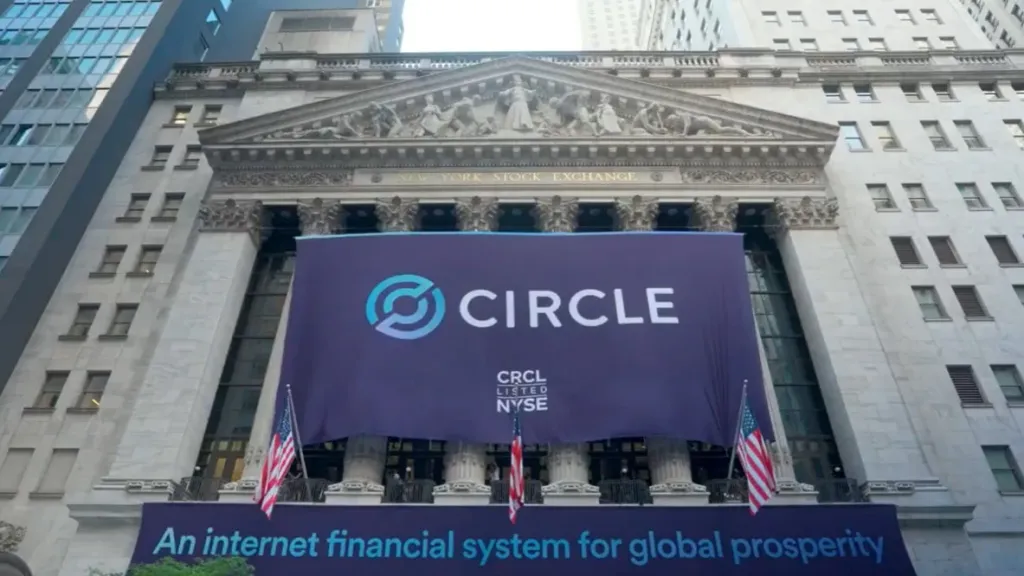The passage of the Stablecoin Bill has led to a USDC issuer rally. Who else won?
Several banks, including JPMorgan, have announced plans to create their own stablecoins this year

The market capitalization of Circle, the creator of one of the major stablecoins, jumped by a third after the U.S. Senate passed a landmark profile bill. It establishes a federal regulatory framework for stablecoins - dollar-backed cryptocurrencies. Shares of other cryptocurrency players also rose in price;
Details
Circle shares soared 34% to $199.6, thanks to momentum from the passage of a bill in the Senate to regulate stablecoins, which are essentially the cryptocurrency equivalent of the dollar. The document is titled GENIUS - Guarding, Enabling, and Nurturing Innovation in the U.S.
"We are witnessing a historic moment: the U.S. Senate has approved GENIUS, bringing us closer to passing cutting-edge legislation that will ensure America's economic and technological leadership for decades to come," wrote Circle co-founder and CEO Jeremy Allaire on social media X.
The capitalization of Circle, which just two weeks ago went public, has already increased 544% since its IPO - amid growing enthusiasm around cryptocurrencies, writes Yahoo Finance. Circle is the issuer of USDC, the world's second-largest steiblcoin by market value, it is worth about $61.4 billion, according to CoinGecko data. The combined value of all steiblcoins reached an all-time high of $251.7 billion on Wednesday, adding 22% since the beginning of the year, according to CoinDesk.
On June 18, shares of other cryptocurrency-related companies also strengthened. Quotes of cryptocurrency exchange Coinbase, which is a co-founder of the USDC, jumped by 16.3%, and brokerage platform Robinhood, which offers trading in digital assets, - by 4.5%. Shares of JPMorgan Bank, which is set to issue its own JPMD stablecoin, added 1.7%.
What this means for the market
The GENIUS bill, which still needs to be approved by the House of Representatives and signed into law by President Trump, establishes rules under which U.S. companies will be able to issue and use dollar-denominated stablecoins for settlement. It passed with bipartisan support, marking a turning point in the debate over cryptocurrency oversight and a breakthrough for a sector whose regulation has long been in limbo, noted Reuters.
If the initiative passes, stablecoins would be required to be backed by liquid assets such as U.S. dollars and short-term Treasury bills, and issuers would be required to publicly disclose the composition of their reserves on a monthly basis.
Bernstein analysts are confident that the document will be finalized as early as this summer. "The main goal of GENIUS is to bring steblecoin innovation back into U.S. jurisdiction, pushing it offshore," Bernstein analyst Gautam Chhugani wrote in a note, her written by Yahoo Finance. - The bill clearly defines stablecoin as a means of payment, thereby equating it with digital cash. Thus, it aims to expand the use of stablecoins beyond the crypto market (which today accounts for about 80-90% of all transactions) and promote wider use for payments and settlement."
"While demand for stackablecoins is already impressive, a new bill pending in Congress could accelerate its growth," considers Zacks Investment Research stock strategist Andrew Rocco. - It will finally create a regulatory framework for the issuance and operation of stablecoins, which will increase confidence in the industry."
"Recognition of stablecoins could also be a strong tailwind for major cryptocurrencies such as bitcoin," predicted analysts at brokerage KBW.
Who can issue Stablecoins
- JPMorgan announced that it plans to launch the JPMD token, the digital equivalent of a bank deposit token, but on the public Base blockchain developed by Coinbase based on Ethereum. It is not a public token and will only be available to the bank's institutional investors. Holders of the coin will be able to receive interest for the deposit.
- Bank of America's stablecoins may come to market, BofA CEO Brian Moynihan announced last week.
- French bank Société Généraleannounced at the time that it planned to launch a US dollar-backed stablecoin.
- Spain's Banco Santander is considering expanding into digital assets, including plans to launch its own stablecoin, transmitted Bloomberg, The bank itself did not comment.
- Major retailers Walmart and Amazon are exploring the possibility of issuing or using stablecoins, potentially allowing them to move large volumes of cash and card transactions they process outside the traditional financial system and save billions of dollars in fees, The Wall Street Journal wrote. В комментарии Reuters представитель Walmart
Which stablecoins are already out there
- The largest capitalized stablecoin USDT is issued by blockchain platform Tether, with the combined value of these tokens exceeding $155 billion.
- US President Donald Trump's cryptocurrency project World Liberty Financial became this year's issuer of a stablecoin called USD1. It has a market capitalization of about $2.2 billion, according to CoinGecko.
- Payment giant PayPal has become the first major fintech company to issue a stablecoin for payments and transfers in August 2023.
- Cryptocurrency company Paxos has created two stablecoins: Global Dollar (USDG) and Pax Dollar (USDP). In addition, Paxos is partnering with the largest crypto exchange Binance to issue a token BUSD.
